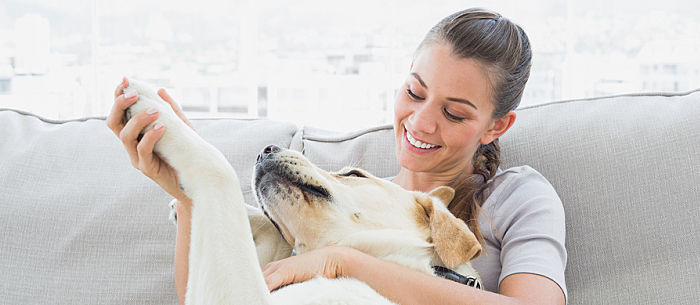The benefits of massage are well known. Anyone who’s had the pleasure of getting a massage knows they can be a great way to work out tension and muscle aches and aid in circulation. What you may not know is that is that dog massages can be just as good for your fur baby.
“Massage can be very beneficial,” says Rod Newman, a certified canine rehabilitation practitioner at Canine Rehabilitation Center of Nashville. “It is one of the tools we use to help dogs recover.” Pam Holt, a certified canine massage therapist with Buddha Dog Animal Massage, agrees. “Mostly, massage is about increasing circulation of blood, lymph and nutrients to the tissue,” Holt explains.
“Massage releases toxins from muscles and other tissues. It stimulates the parasympathetic nervous system. It stimulates the release of endorphins. Essentially, massage enhances every system and organ in the body.”
A professional dog massage therapist can be a real boon for your dog’s well being. “They should be educated in the anatomy and physiology of your dog,” Holt points out. “They have the experience that helps them benefit your dog as much as possible. But I believe everyone can massage their dog if they use common sense. Ask a credentialed animal massage practitioner to show you massage strokes when you hire them.” As part of canine rehab, Newman says that he often offers classes to teach pet parents to massage their own dogs.
If you want to give your dog a massage at home, try these six techniques:
- Stroke Your Dog
This is a natural way to help your dog relax, and it will feel familiar to your buddy. Simply start at your dog’s head and make long, slow and relaxing strokes all the way along the body, always petting with the direction of the hair. Use both hands, alternating pressure to keep a continuous flow of touch on your dog’s body.
- Knead Your Dog’s Muscles
Like you, your dog can hold tension in her muscles. To knead, move your fingers and thumbs in small circular movements around the muscles. Try gently kneading some of those areas that tend to hold the most tension, such as around the withers (shoulder area) and the upper portion of the leg.This helps to relax and increase circulation to the muscle. Increased circulation helps to rid the muscle of toxins and lactic acid, the chemical that causes soreness after a workout. Use a light touch with small breeds, since their tiny bones are fragile.
- Roll Your Dog’s Skin
Grasp the loose sections of skin and gently roll them between your fingers. Roll the skin down the length of the body. Be careful not to pinch your dog’s skin in the process. This technique helps to reduce skin adhesions and increases circulation to the skin and hair follicles. Increased blood flow contributes to a healthy coat.
- Stretch Your Dog’s Legs
Just like you need a cool-down after a workout, your four-legged athlete can benefit from a good stretch. This is a little advanced and should never be forced on a dog. If you are unsure, start by watching how your dog stretches himself, then gently copy his gestures. The safest stretches start in the legs. Stretch the front legs out and forward. Stop stretching as soon as you feel resistance.
- Rub Your Dog’s Ears
Your dog’s ears are loaded with nerve endings. When you rub them, they send signals to the brain that do everything from relax your dog to increase her production of endorphins, the feel-good hormone. To rub her ears, start at the base of the ear (closer to the head) and grasp it firmly but gently. Rub down to the tip and repeat.
- Massage Your Dog’s Feet
Like human feet, a dog’s feet become cramped and tense after walking all day. By teaching your dog how nice a massage can be, you may start to find it easier to clean his feet and clip his nails. Start by bending the foot at the ankle area. Gently squeeze the ankle, then knead the foot down to the end of each toe. Pull each toe separately and gently bend it forward and backward.
After a massage, make sure that your dog has plenty of water to flush any lactic acid or toxins from his body. In the beginning, keep your total massage time short, just a few minutes. As both you and your little buddy become used to massage, you can lengthen your session.
While a daily massage is ideal, it’s especially important to help your dog to relax after exerting himself or after a particularly tense car ride or vet visit. If you pass these tips along to your dog sitter your pup can be extra relaxed even when you’re not around. By incorporating dog massage into your daily routine, you can bond with your dog and help him live a healthier life. So try taking petting to the next level.
Want more tips on how to pamper your pooch? Check out these Spa Services for Pets.
Shellie Braeuner is an award-winning children’s author. She earned an M.Ed from Vanderbilt in Human Developmental Counseling and has worked as a nanny for more than 25 years.
* This article is for general informational purposes only. It is not intended nor implied to be providing medical advice and is not a substitute for such advice. The reader should always consult a health care provider concerning any medical condition or treatment plan. Neither Care.com nor the author assumes any responsibility or liability with respect to use of any information contained herein.



